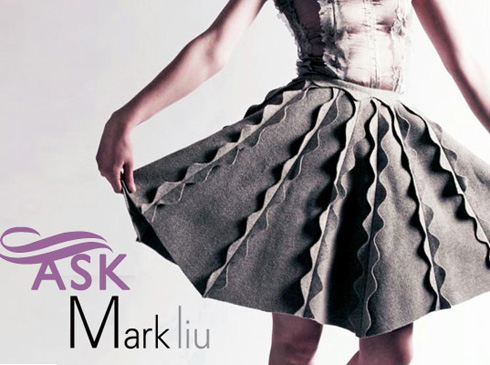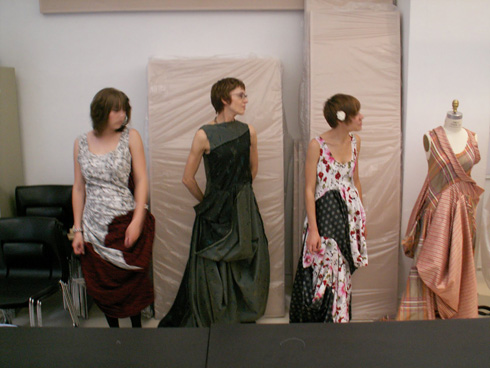Going to Zero: The Designers Looking to Cut Fashion Waste
Fact: It costs less money for clothing manufacturers to throw away the scraps from their cutting room floors than to recycle them. {NYTimes}
Fiction: Not a single designer in the world of fashion cares.
Though the Times says 15-20 percent of the fabric used to create clothing ends up in landfills, a “small but impassioned†group of designers including Mark Liu, Julian Roberts and Zandra Rhodes, in addition to students at Parsons, have dedicated themselves to working toward a “zero-waste†policy in fashion – meaning not a single scrap of fabric thrown out.
Okay, so maybe it’s not a “movement” yet, but zero-waste is definitely beginning to garner some attention in the fashion industry. In a country where recycling programs have popped up for everything from water bottles to iPods, attention has turned to the greening of the fashion industry. Various companies have begun to create detergents that clean clothing in cold water and washers that work specifically with these cold-water detergents. But what about what happens to the garment pre-consumer, specifically in the design and production process?
If you think zero-waste is too unrealistic, think again because the movement is heating up with events and supporters piling up. {The Cut}
“The book ‘Shaping Sustainable Fashion: Changing the Way We Make and Use Clothes’ by Alison Gwilt and Timo Rissanen, zero-waste pioneers, will be published in February by Earthscan. And an exhibition of zero-waste fashions, curated by Mr. Rissanen and another zero-waste designer, Holly McQuillan, will be held in New Zealand next spring and in New York the following fall. Also in March, an exhibition, ‘No Waste/Zero Waste’ will open at the Averill and Bernard Leviton A + D Gallery in Chicago, part of Columbia College Chicago.†{The New York Times}
The Cut points out that the mission is difficult because in order for no waste to result from manufacture, clothing producers will have to fit random scraps of fabric together perfectly on a regular basis.
Though zero-waste seems impractical, the idea of producing less waste in the first place rather than creating clothes from recycled scraps, as many eco-chic brands do, makes a whole lot of sense. It can be difficult to make irregular fabric pieces more couture than crafty, but in the right hands, the unique nature of each piece could even be a selling point. It would be great to see fashion get 100% behind zero-waste!
Additional reporting by Karilynn Williamson


